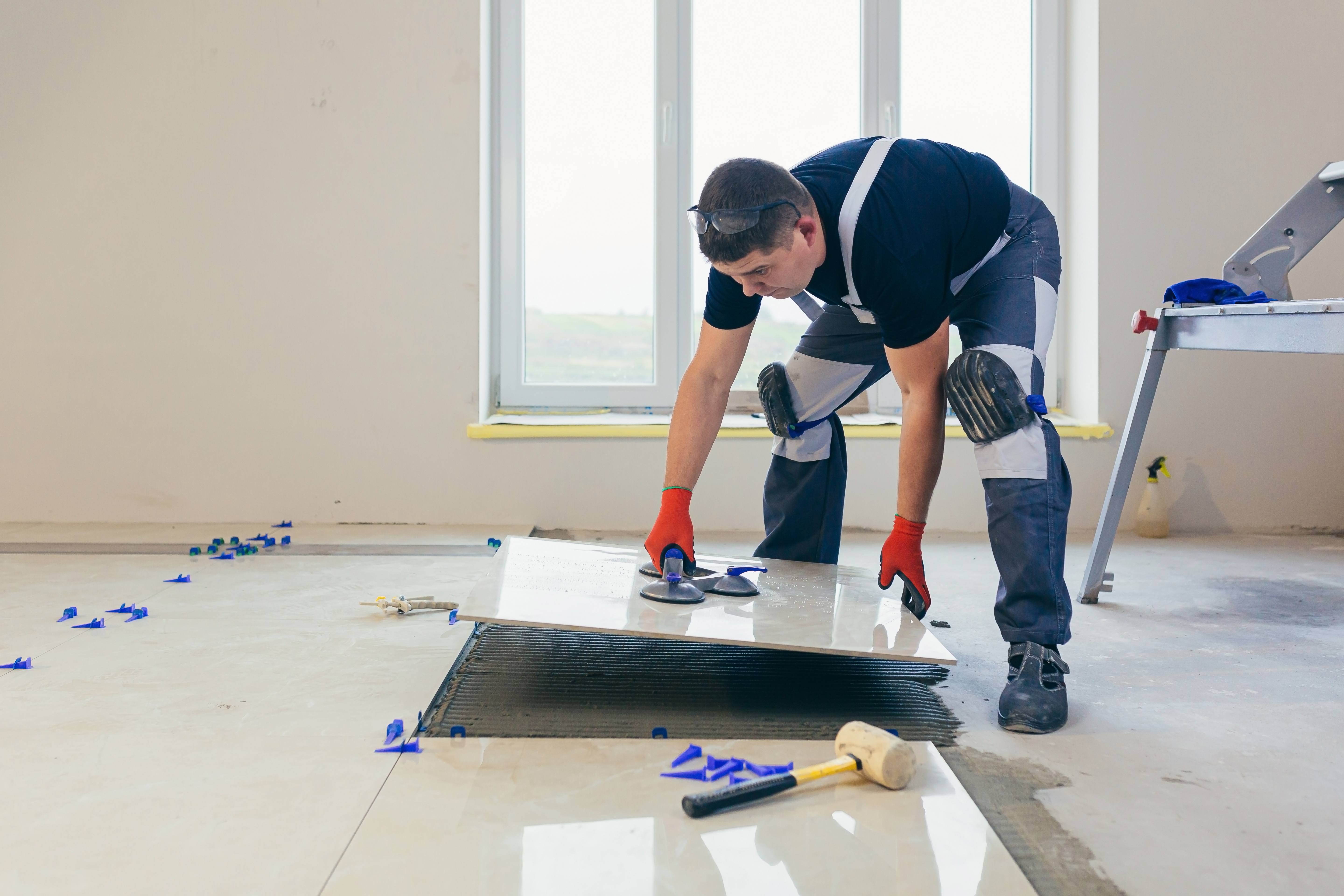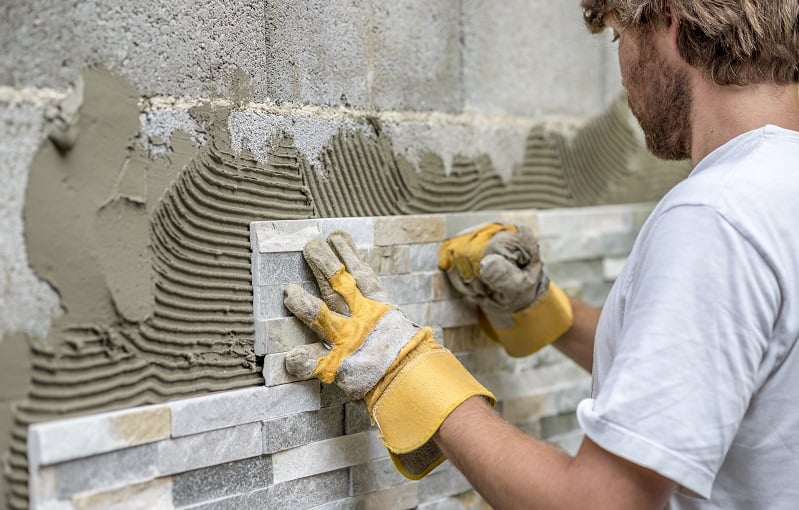Improve Your Home: Professional Tile Installation Austin Solutions
Improve Your Home: Professional Tile Installation Austin Solutions
Blog Article
Discover the Tricks to Perfect Floor Tile Installation Whenever
Mastering the art of floor tile installation includes a series of exact steps and methods that, when performed appropriately, can result in a refined and smooth surface. By comprehending the keys behind each step, you can make sure that your ceramic tile installation not just fulfills however exceeds your expectations.
Appropriate Surface Area Preparation
Effective tile installment pivots significantly on precise surface prep work to ensure a perfect result. The surface area needs to be clean, dry, and structurally appear to protect against future problems such as loose floor tiles or split cement.
To assure proper attachment, it is suggested to rough up smooth surfaces via sanding or scarifying. Furthermore, using a primer can improve bonding in between the ceramic tile and the substratum adhesive. Uneven surfaces must be leveled making use of a self-leveling substance to avoid lippage and make sure a smooth coating.
Additionally, checking for possible sources of wetness is vital, as excess dampness can cause mold growth and damages the tiles gradually. Utilizing a wetness barrier or waterproofing membrane layer in damp areas like restrooms or kitchens is essential to shield the ceramic tiles from water damage. By thoroughly preparing the surface prior to ceramic tile installation, one can develop a visually attractive and long lasting tiled area that will stand the test of time.

Selecting the Right Adhesive
Selecting the appropriate adhesive is an important step in guaranteeing the successful installment of tiles. The kind of adhesive you pick will depend upon various aspects such as the kind of ceramic tile, the substratum material, and the place of the setup. There are different kinds of adhesives available in the marketplace, including thin-set mortar, mastic, and epoxy.

Epoxy adhesives are extremely sturdy and water-resistant, making them perfect for areas vulnerable to moisture such as kitchen areas or bathrooms. They are likewise ideal for setting up glass or steel ceramic tiles. When selecting a sticky, make sure to comply with the producer's recommendations and take into consideration the particular needs of your tile installation task.
Precision Reducing Methods
Utilizing specific cutting strategies is necessary for achieving precise and seamless tile setups. Among the most usual tools utilized for accuracy cutting in tile installment is the tile cutter. Ceramic tile cutters can be found in various kinds, including hands-on ceramic tile cutters, electrical wet saws, and portable tile cutters. Hands-on floor tile cutters are suitable for straight cuts on ceramic and porcelain ceramic tiles, giving accurate and clean edges. Electric wet saws, on the various other hand, are suitable for cutting more challenging products like rock and thicker ceramic tiles with accuracy and ease. Portable tile cutters use transportability and ease for smaller sized reducing jobs or intricate other cuts.
Furthermore, utilizing devices like floor tile scribes or glass cutters can assist in scoring and breaking floor tiles with accuracy. By grasping these precision cutting methods, tile installers can make certain an expert coating and an aesthetically enticing result in their ceramic tile projects.

Cement Application Tips
When transitioning from precision reducing techniques to grout application in tile installation, focus to information and strategy is critical for attaining a remarkable coating. Grout serves not just as a practical component that fills the spaces between floor tiles but additionally plays a substantial role in the total aesthetic of the setup.
When using cement, job in small areas at a time to stop it from drying out too rapidly. Use a rubber float to press the cement right into the joints at a 45-degree angle, guaranteeing complete protection and compacting the material. When the grout is applied, make use of a damp sponge to clean the tiles, making certain not to remove grout from the joints. Buff the floor tiles with a completely dry cloth to eliminate any kind of haze and attain a polished coating. Following these cement application ideas will lead to a properly installed tile surface that improves the elegance of any type of area.
Finishing Touches and Maintenance
To finish the ceramic tile installation project properly, interest to detail throughout the finishing touches and regular upkeep is crucial. After the cement has actually dried out and the tiles are firmly in location, the final actions her comment is here involve guaranteeing that all edges are effectively sealed.
Normal upkeep is vital to protecting the beauty and capability of your tiled surfaces. A straightforward regimen of sweeping or vacuuming complied with by wiping with a gentle cleanser can help maintain your ceramic tiles looking beautiful (tile installation austin). For locations that are often revealed to dampness, such as washrooms or kitchen areas, normal resealing of grout lines is recommended to avoid mold and mold development
Conclusion
To conclude, attaining perfect ceramic tile setup each time calls for focus to detail and proper methods. By focusing on surface preparation, choosing the proper adhesive, using precision reducing approaches, using cement carefully, and completing with focus to information, you can ensure a professional-looking result. Remember to comply with these steps and keep your floor tiles on a regular basis to lengthen their life-span and keep them looking their finest.
One of the most typical tools utilized for precision cutting in floor tile installation is the ceramic tile cutter. Tile cutters come in various types, consisting of manual tile cutters, click to find out more electrical wet saws, and portable ceramic tile cutters. Hands-on tile cutters are suitable for straight cuts on ceramic and porcelain tiles, offering clean and accurate edges. In addition, making use of devices like ceramic tile scribes or glass cutters can help in scoring and snapping ceramic tiles with precision. By mastering these accuracy reducing methods, floor tile installers can guarantee a professional coating and an aesthetically attractive result in their tile tasks.
Report this page